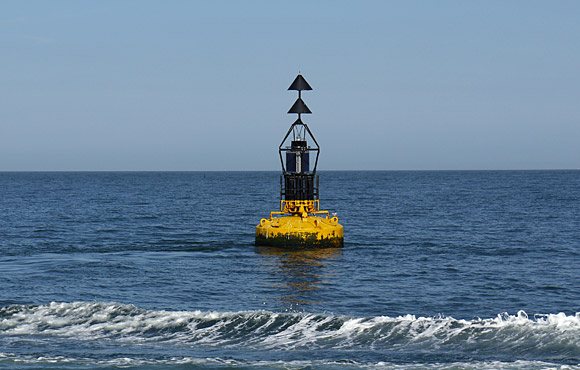|
Whitby harbour and piers
Views from around the harbour and a boat trip around the bay
(Photos © urban75, June 2010)
Right up to the reign of Elizabeth I, Whitby was nothing more than a piddling fishing port, with barely 30 houses and two hundred inhabitants reported in 1540.
Things looked up for the port when it was discovered that the area was abundant in alum, which was used in curing leather, fixing dyed cloths and for medicinal uses.
At the end of the 16th century, the Vatican had maintained a virtual monopoly on the production and sale of the product, so sneaky Thomas Chaloner of York secretly brought some of the Pope's workmen to England and swiftly established a thriving alum industry in Yorkshire.

Several alum producing centres were established close to Whitby, with the port seeing a huge increase in traffic, for both the alum and the coal used in its production.
Whitby grew in size and wealth, adding shipbuilding to its activities, with an import tax raising enough dosh to improve and extend the town's iconic twin piers.
A less salubrious trade started up in 1753, when the first whaling ship set sail from Whitby to Greenland. By 1795 Whitby had become a major centre for the whaling industry.
The arrival of the railway in 1839 saw the development of Whitby as a tourist destination, although its port remains busy, as Wikipedia reports:
The modern Port of Whitby, strategically placed for shipping to Europe, with very good proximity to the Scandinavian countries, is capable of handling a wide range of cargoes, including grain, steel products, timber and potash. Vessels of up to 3,000 tonnes DWT are received on a routine basis at the Wharf, which has the capability of loading/unloading two ships simultaneously. 54,000 square feet (5,000 m2) of dock space is currently (2004) allocated for storage of all-weather cargo and a further 17,000 square feet (1,600 m2) of warehouse space is reserved for weather-critical goods storage.

There's loads of boats offering tours around the bay. We jumped on a boat for a quick shimmy out to the Whitby Buoy.

Whitby pier has no less than four lighthouses, although only two remain fully operational.
This is the Whitby East Pier - unsurprisingly to be found on the end of the East Pier - a wooden affair, built in 1914 after the pier was extended.
The lighthouse stands on a wooden framework of four legs, raised 23 feet off the pier.

It's West Pier counterpart is an almost exact replica, except it's painted green to reflect its navigational function.

Out to sea.


The Whitby Buoy.

Looking back at Whitby, with the ruined Abbey on the hill.

A view of the two piers.

To the left can be seen the Whitby East Pier Light (or 'Whitby East Breakwater Light), which was built in 1854.
The stone built lighthouse - which was replaced by the original East Pier Light in 1914 - stands 55 foot high and has a light that is visible from 8 miles.

Motoring back into Whitby port.



The swing bridge on the River Esk, Whitby.

Looking along the west pier, with the Whitby West Pier Light, to the left.
Also known as the
Whitby West Breakwater Light, the stone built lighthouse was constructed in 1831, and stands on a 83ft high column tower, with the lantern on top.
The lighthouse still shines a green light and its beam is visible for 10 miles

Replica boat leaving the harbour.




Looking along the beach from the pier.

Ornate metal gates erected as a tribute to Whitby seafarers.

Walking along the west pier.

View from the end of the west pier.


The ship is a 40% scale replica of the HMS Endeavour, with its diminished size playing havoc with perspective!

End of the west pier.


On the lower tier of the west pier.





Tyre tracks on Whitby beach at the end of the day.

« Yorkshire photos home La Rosa hotel, Whitby »
|
|

